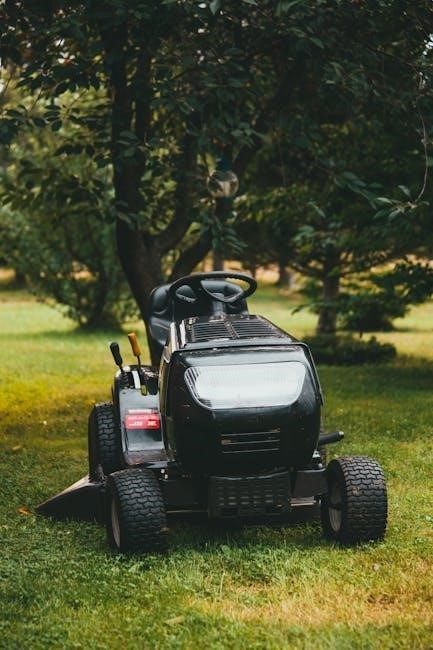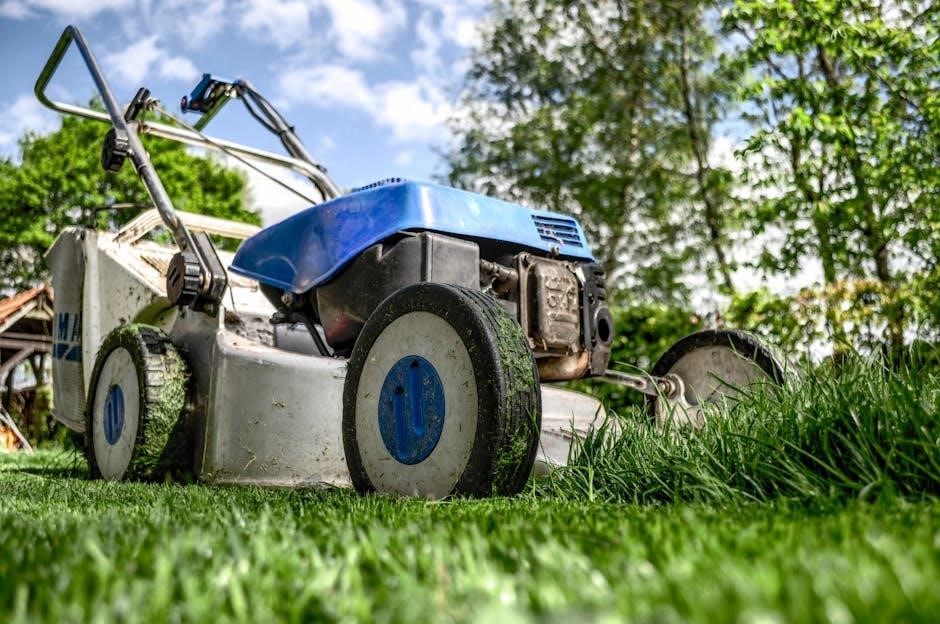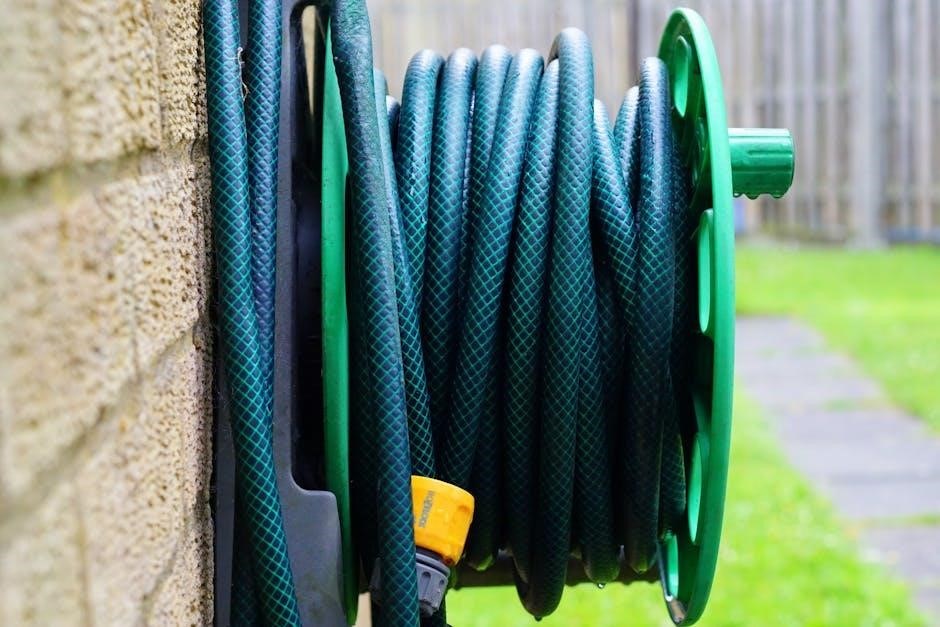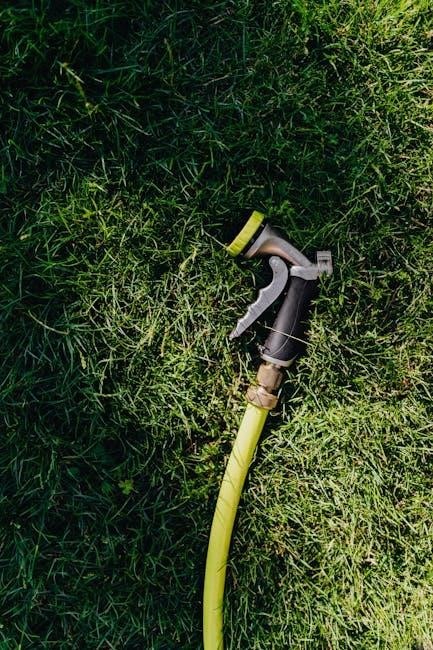Proper lawn mower maintenance ensures optimal performance, longevity, and safety. Regular tasks like oil changes, blade sharpening, and deck cleaning are essential. A well-structured checklist helps you stay organized and proactive, preventing breakdowns and extending your mower’s lifespan. By following a comprehensive maintenance schedule, you can keep your lawn mower in top condition throughout the mowing season and beyond.
1.1 Importance of Regular Maintenance
Regular maintenance is crucial for ensuring your lawn mower operates efficiently and safely; It prevents breakdowns, reduces repair costs, and extends the lifespan of the equipment. By addressing issues early, you avoid costly damages and downtime. Proper upkeep also enhances cutting performance, leading to a healthier lawn. A consistent routine ensures reliability and optimizes fuel efficiency, making maintenance a wise investment in your mower’s longevity and overall functionality.
1.2 Benefits of Using a Maintenance Checklist
A maintenance checklist ensures tasks are never overlooked, promoting consistency and efficiency; It helps track progress, preventing small issues from becoming major problems. By following a structured plan, you save time and reduce the likelihood of costly repairs. A checklist also enhances safety by reminding you of critical steps, like disconnecting the spark plug before servicing. This organized approach ensures your lawn mower remains reliable and performs optimally throughout the season.

Pre-Maintenance Checklist
Before starting maintenance, review the owner’s manual, disconnect the spark plug, and drain fuel if necessary. Clean the mower and prepare tools for efficient servicing.
2.1 Consulting the Owner’s Manual
Consulting the owner’s manual is essential for effective maintenance. It provides manufacturer-specific guidelines, recommended schedules, and detailed instructions. Review sections on oil change procedures, blade sharpening, and winter preparation. Understanding these guidelines ensures safety and optimal performance. Always refer to the manual before starting any task to avoid errors and maintain warranty compliance. This step is crucial for both novice and experienced users to ensure all maintenance is done correctly.
2.2 Safety Precautions Before Starting Maintenance
Before performing any maintenance, ensure your safety. Disconnect the spark plug to prevent accidental startups. Wear protective gear like gloves and safety glasses. Check the mower is on a level surface and cool. Keep loose clothing tied back and avoid jewelry that could get caught. Ensure all moving parts are stationary before touching them. Following these precautions reduces the risk of injury and ensures a safe working environment.

Daily Maintenance Tasks
Daily maintenance ensures your lawn mower runs efficiently. Check tire pressure, inspect the mower deck for debris, and sharpen or replace blades as needed for optimal performance;
3.1 Checking Tire Pressure
Checking tire pressure daily ensures even cutting and proper mower stability. Refer to the owner’s manual for the recommended pressure levels. Under-inflated tires can lead to uneven cutting and increased wear. Check pressure when tires are cold for accuracy. Properly inflated tires improve maneuverability and reduce the risk of damage to the mower or lawn. Maintain consistent pressure to ensure optimal performance throughout the mowing season.
3.2 Inspecting and Cleaning the Mower Deck
Inspecting and cleaning the mower deck daily prevents grass buildup and rust. Remove clippings and debris to maintain airflow and cutting efficiency. Use a wire brush or scraper to clean thoroughly. A clean deck ensures even cutting and reduces the risk of corrosion. Regular maintenance prolongs the deck’s lifespan and keeps your mower performing at its best. Keep the underside free from obstructions for optimal results.
3.3 Sharpening or Replacing Blades
Sharpening or replacing mower blades is essential for maintaining a clean, even cut. Dull blades tear grass, leaving it vulnerable to disease. Inspect blades weekly for dullness or damage. Use a file or grinder to sharpen, ensuring the cutting edge remains razor-sharp. If blades are bent, rusty, or excessively worn, replace them immediately. Proper blade maintenance enhances cutting efficiency, protects your lawn, and prolongs mower performance. Always follow safety guidelines when handling sharp objects.

Weekly Maintenance Tasks
Weekly tasks include checking and replacing the air filter, inspecting belts for wear, and ensuring all components are in good working condition to maintain optimal performance and longevity.
4.1 Checking and Replacing the Air Filter
Regularly inspecting and replacing the air filter is crucial for engine performance. A dirty filter reduces airflow, decreasing efficiency and potentially damaging the engine. Remove the filter, clean or replace it as needed, and ensure it’s securely reinstalled. Refer to your mower’s manual for specific instructions. A clean air filter ensures proper combustion, reducing emissions and extending the mower’s lifespan.
4.2 Inspecting Belts for Wear and Tear
Inspecting belts weekly is essential to ensure smooth operation. Look for cracks, fraying, or misalignment. If damaged, replace the belt immediately to prevent machinery failure. Proper belt maintenance ensures efficient power transmission and reduces the risk of unexpected breakdowns. Always refer to the owner’s manual for specific guidance on belt inspection and replacement for your lawn mower model.

Monthly Maintenance Tasks
Performing monthly maintenance ensures your lawn mower runs efficiently and reliably. Key tasks include changing the engine oil, adding fuel stabilizer, and checking critical components for wear.
5.1 Changing the Engine Oil
Changing the engine oil monthly is crucial for maintaining your lawn mower’s health. Refer to the owner’s manual for the correct oil type and capacity. Drain the old oil responsibly, then refill with fresh oil. This prevents engine wear, keeps the motor lubricated, and ensures smooth operation. Regular oil changes extend the mower’s lifespan and prevent costly repairs. Clean the oil filter or replace it if needed.
5.2 Adding Fuel Stabilizer
Adding fuel stabilizer monthly prevents gasoline degradation, which can clog fuel lines and damage engine components. Pour the recommended amount into the tank and mix well. This ensures fuel remains fresh, especially during storage or off-season. Stabilizer helps maintain engine performance, prevents corrosion, and keeps the fuel system clean. Regular use extends the mower’s lifespan and avoids costly repairs.
Seasonal Maintenance Tips
Seasonal maintenance ensures your lawn mower is ready for spring and protected during winter. Clean and prepare in spring, and winterize by draining fuel and applying rust inhibitors.
6.1 Spring Maintenance
Spring maintenance is crucial to prepare your lawn mower for the new season. Start by cleaning the mower deck thoroughly to remove dirt and debris. Check and adjust tire pressure for optimal performance. Sharpen or replace dull blades to ensure clean cuts. Inspect and replace the air filter if necessary, and check the oil and belts for wear. Refer to your owner’s manual for specific spring startup procedures to ensure your mower runs smoothly.
Winterizing your lawn mower ensures it remains in good condition during the off-season. Start by draining the fuel tank or adding a fuel stabilizer to prevent corrosion. Clean the mower deck and blades to avoid rust buildup. Change the engine oil and replace the spark plug if needed. Store the mower in a dry, protected area, and disconnect the spark plug for safety. Proper winter care helps maintain your mower’s performance for the next season.
Annual Maintenance Tasks
6.2 Winterizing Your Lawn Mower
Winterizing your lawn mower is crucial for long-term performance. Drain fuel, add stabilizer, or store with an empty tank. Clean the deck and blades to prevent rust. Change the oil and spark plug if needed. Store in a dry place to avoid moisture damage. Disconnect the spark plug for safety. Proper winter care ensures your mower starts reliably next spring and maintains its efficiency year after year.
7.1 Inspecting the Spark Plug
Inspecting the spark plug annually ensures proper engine performance. Remove the plug using a socket wrench, checking for wear or fouling. Clean or replace it if necessary. A faulty spark plug can cause starting issues or poor engine operation. Always consult your owner’s manual for specific instructions tailored to your mower model. Regular inspection helps maintain reliable engine function and prevents costly repairs.
7.2 Checking the Battery
Annual battery inspection ensures reliable mower operation. Check terminals for corrosion and secure connections. Test voltage with a multimeter; a fully charged battery should read 12.6V. Keep terminals clean by scrubbing with a wire brush and applying petroleum jelly. If voltage is low, recharge or replace the battery as needed. Proper maintenance prevents starting issues and ensures your mower is ready for the next use.
Additional Tips for Extending Mower Life
Regular cleaning, proper storage, and consistent maintenance routines significantly extend your mower’s lifespan. Avoid overloading the mower and use the correct fuel type for optimal performance and durability.
8.1 Keeping the Mower Clean
Regularly cleaning your lawn mower is essential for maintaining its performance and longevity. Remove grass clippings and debris from the mower deck to prevent rust and corrosion. Use a wire brush or hose to clean thoroughly, especially after each use. Drying the mower after washing prevents moisture buildup. A clean mower ensures efficient cutting, reduces wear on moving parts, and helps maintain its overall condition for reliable service throughout the season.
8.2 Storing the Mower Properly
Proper storage is crucial for maintaining your lawn mower’s condition. Drain fuel or add stabilizer if storing for long periods. Clean the mower thoroughly to prevent rust and corrosion. Store it in a dry, protected area away from direct sunlight and moisture. Regular inspections during storage ensure readiness for the next season, keeping your mower in optimal shape and extending its lifespan effectively.
Safety Guidelines
Always disconnect the spark plug before maintenance. Wear protective gear like gloves and goggles. Ensure the area is clear of debris and children to prevent accidents.
9.1 Disconnecting the Spark Plug
Disconnecting the spark plug is a critical safety step before performing any maintenance. Locate the spark plug wire, typically on the mower’s side or rear. Pull it off gently to prevent accidental starts. This ensures the engine remains inactive during repairs. Always refer to the owner’s manual for specific instructions, as spark plug locations vary by model. This simple step prevents injuries and ensures a safe working environment.
9.2 Wearing Protective Gear
Wearing protective gear is essential for safety during lawn mower maintenance. Always wear gloves to protect your hands from cuts and abrasions. Safety glasses or goggles prevent debris from entering your eyes. Sturdy, closed-toe shoes or boots safeguard your feet from heavy objects. Long pants can protect your legs from sharp edges or flying particles. Additionally, tie back long hair and avoid loose jewelry to avoid accidents. Proper attire ensures your safety while maintaining your lawn mower.
Costs and Budgeting
Budgeting for lawn mower maintenance involves planning for parts like blades, oil, and filters. Average annual costs range from $50 to $150, depending on the mower type and usage. DIY maintenance is more cost-effective than hiring professionals, saving up to 50% on labor costs. Regular upkeep helps avoid expensive repairs, ensuring long-term savings and optimal performance.
10.1 Average Cost of Maintenance
The average cost of maintaining a lawn mower varies between $50 and $150 annually. This includes blade sharpening or replacement, oil changes, and air filter replacements. For walk-behind mowers, expenses are typically lower, around $50 to $100. Riding mowers, with more complex systems, can cost up to $150. Regular maintenance prevents costly repairs, making it a worthwhile investment for extending the mower’s lifespan and ensuring efficiency.
10.2 DIY vs. Professional Services
DIY lawn mower maintenance can save money and build familiarity with your equipment. Tasks like oil changes and blade sharpening are often simple. However, complex repairs may require professional help. DIY costs less—around $50 to $100 annually—but demands time and effort. Professional services are more convenient but can range from $150 to $300 annually. Balancing cost and convenience helps decide the best approach for your needs and skill level.
Regular lawn mower maintenance is crucial for optimal performance and longevity. Using a checklist ensures consistency, while DIY and professional services offer flexible solutions. Stay proactive to enjoy a well-manicured lawn year-round.
11.1 Summary of Key Maintenance Points
Adhering to a lawn mower maintenance checklist ensures efficiency and longevity. Daily tasks include blade inspection and tire checks. Weekly, inspect air filters and belts. Monthly, change oil and add stabilizers. Annually, replace spark plugs and batteries. Seasonally, prepare for spring and winterize properly. Regular cleaning and proper storage prevent rust and damage. Consistency in these practices guarantees reliable performance and extends mower lifespan significantly.
